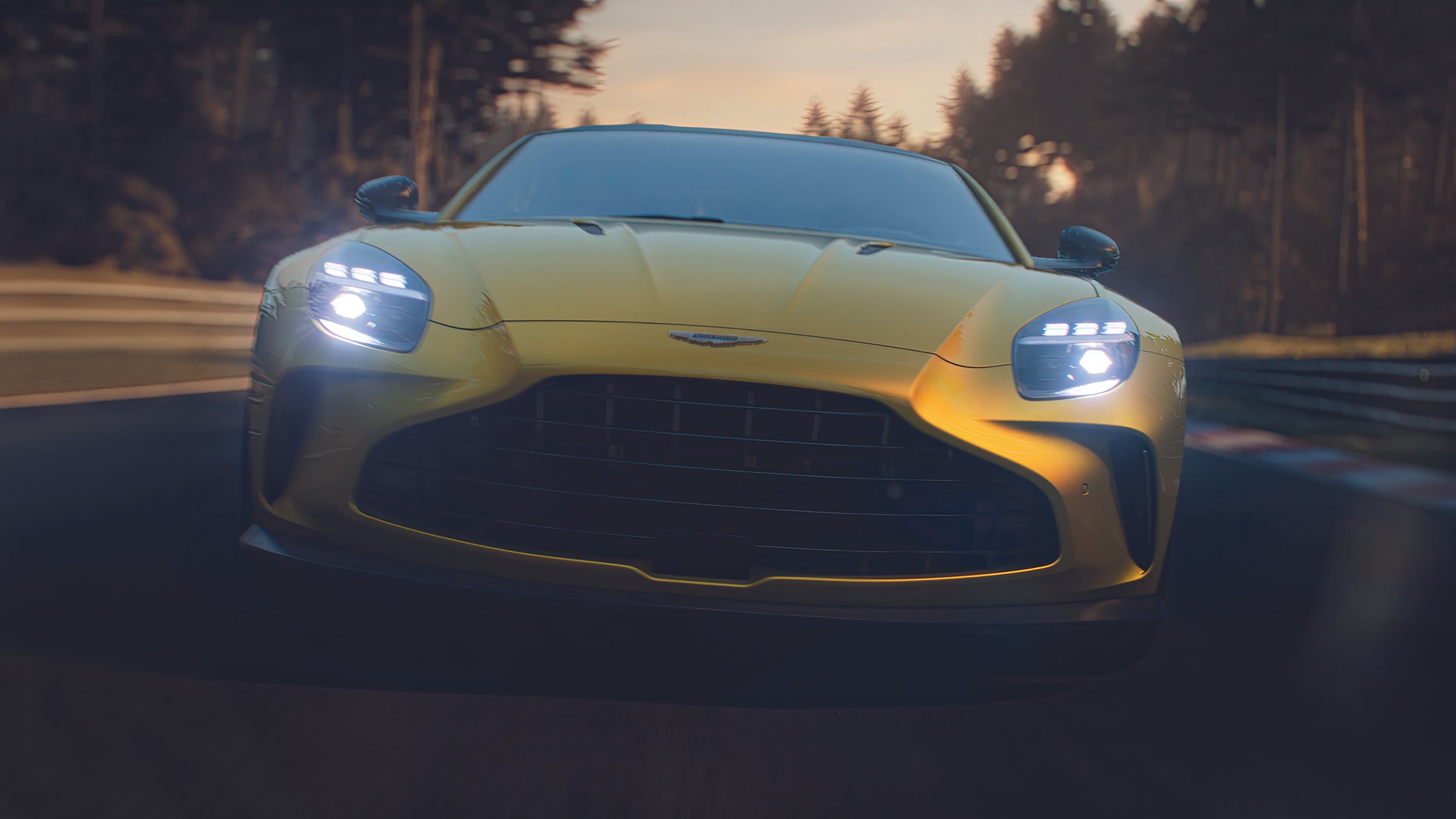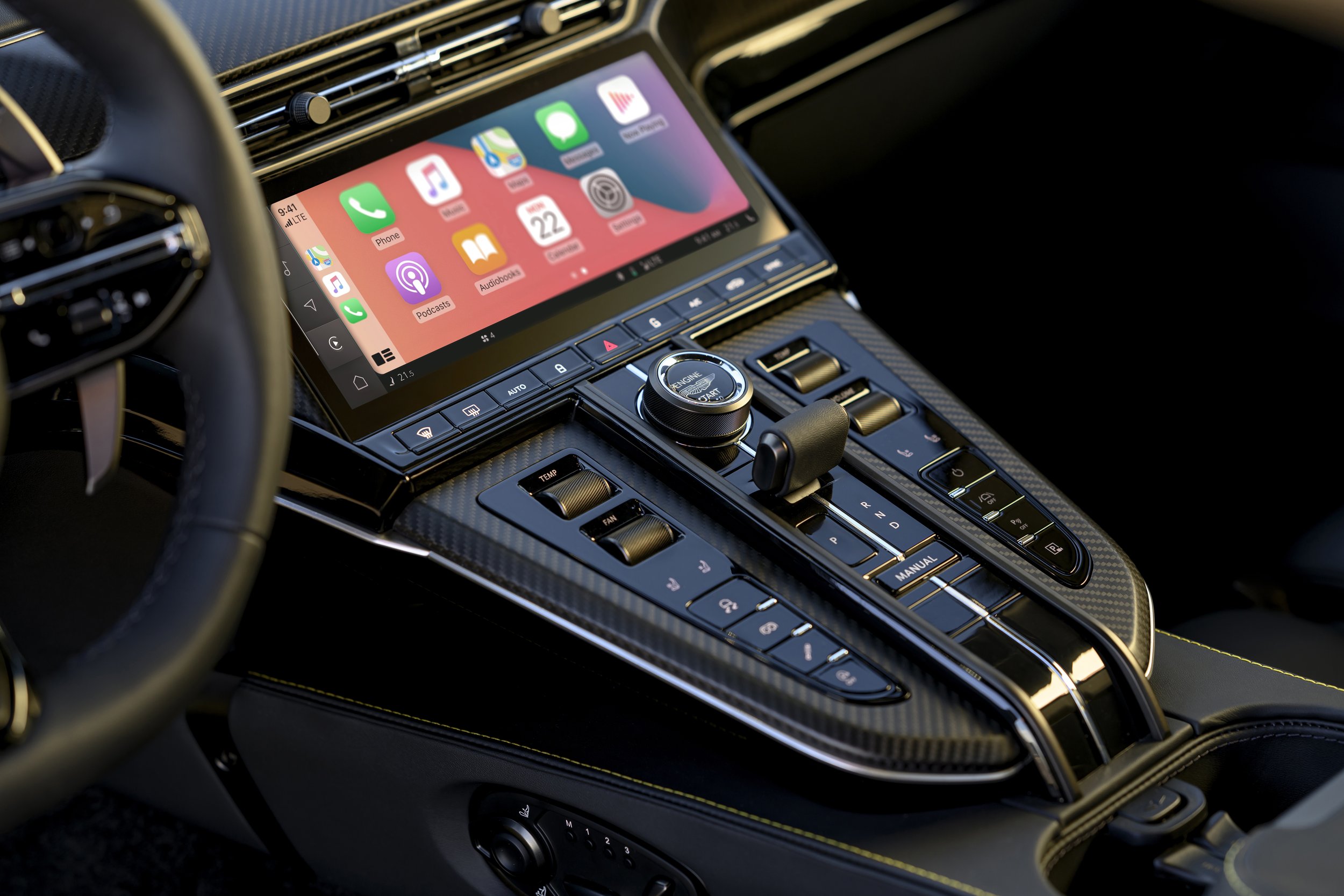Refreshed Vantage shapes up at last
/A whole new nose, a fresh interior and some additional grunt and tech are coming.
BIGGEST challenge for those writing about the long-awaited Aston Martin Vantage upgrade will to be the resist embedding cheesy Bond references.
You just know that, this being a facelift of a six year old car, there’s bound to be some who feel need to express how they’re shaken, not stirred and suggesting this is no time for AM to die; though latest outcomes suggest it’s hardly out of peril.
Anyway, to the car, which released internationally today, with the promotional material including the video here, showing a familiar-looking bloke who apparently drives for Aston boss Lawrence Stroll on weekends.
The update for Vantage delivers a wholly reskinned front end, has what those who’ve viewed in the metal say is a nicer-looking and classier interior and, of course, is meted a serious hike in power from the 4.0-litre twin-turbocharged V8 engine sourced from a tie-up with Mercedes-AMG.
Having until now sufficed with 380kW and 685Nm it’s now cracking out 496kW and 800Nm, a result of Aston (or its supplier) modifying the cam profiles, optimising the compression ratio, beefing up the cooling system and then fitting a pair of larger turbos.
Big change for small effect. The new is two tenths quicker in the 0-100kmh sprint, which the outgoing car achieves 3.6 seconds, and top speed climbs from 314kmh to 325kmh.
Aston has also thoroughly overhauled the control and chassis systems. There's a new Launch Control, working with the electronically controlled rear differential to maximise off-the-line traction, while the car's aluminium structure has been reinforced for lateral strength via the addition of new crossmembers.
The car introduces 6D-IMU, or six-dimensional Inertial Measurement Unit. This uses various sensors - in the six-axis accelerometer, the powertrain, the braking system and the E-Diff - to build a detailed picture of exactly what the car is doing in terms of weight transfer. By using this data, the car can then actively control the ride, the handling and the steering to make the vehicle behave at its best, in all weathers, on road and track.
For drift fans, there's also a setting called Adjustable Traction Control (ATC). This allows a degree of slip from the rear tyres without completely switching the system off.
It also takes new more reactive adaptive dampers, retuned electronic power-assisted steering and fresh forged 21-inch alloys, 9.5 inches wide at the front and fully 11 inches broad at the rear. These are wrapped in Michelin Pilot Sport S5 tyres, 275/35 R21 up front and 325/30 R21 at the rear, made specifically for the car, which is why they now have 'AML' coding on their sidewalls.
Bigger oomph asks for bigger brakes. It has cast-iron 400mm front brake discs complemented by 360mm rear items, drilled for improved heat management. Carbon ceramic brakes can be specified as an option. This takes 27kg off the Aston's unsprung mass.
The front end is all changed, to point of it looking like an all-new thing. It takes larger Matrix LED headlamp units and a veined grille which has grown 38 percent in size. The whole car is 30mm wider, too.
Details have changed. The side-strake cutting into the door is more pronounced.It gets frameless door mirrors. The rear bumper now incorporates side vents and larger-diameter quad tailpipes for the Vantage's exhaust. There are 21 body colours available and Aston also provides its full Q customisation service.
Much has been spent into redesigning the interior to modern standard. The layout is now centred around an angled console that those who’ve experienced it say bears a resemblance to a similar set-up in various Porsche models. The 10.25-inch next-gen infotainment system, borrowed from the larger Aston DB12 model, has dropped from a standalone screen mounted high on the dash to a discreet, angled display below the central air vents. There's also a much cleaner and better shaped digital instrument cluster ahead of the driver, which has allowed Aston to make the previously squared-off wheel rounder.
Hand-stitched Bridge of Weir leather is used for most of the interior finishing. Audiophiles who don't like the 390-watt, 11-speaker standard sound system with QuantumLogic processing fitted as standard option up to a 15-speaker, 1170-watt Bowers and Wilkins surround upgrade.
Production begins soon. Price has yet to be shared, but the current type begins at $239,000. An AMR manual model and a Roadster open-top derivative are likely to follow.



















